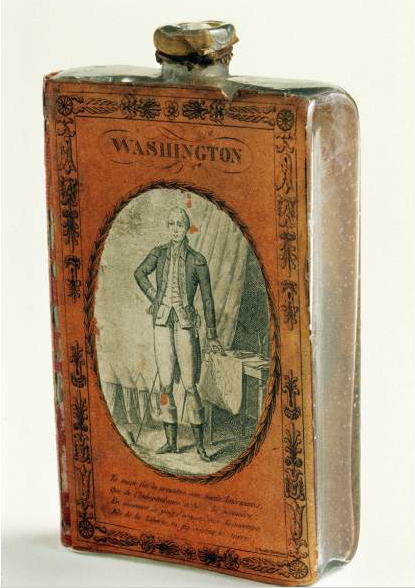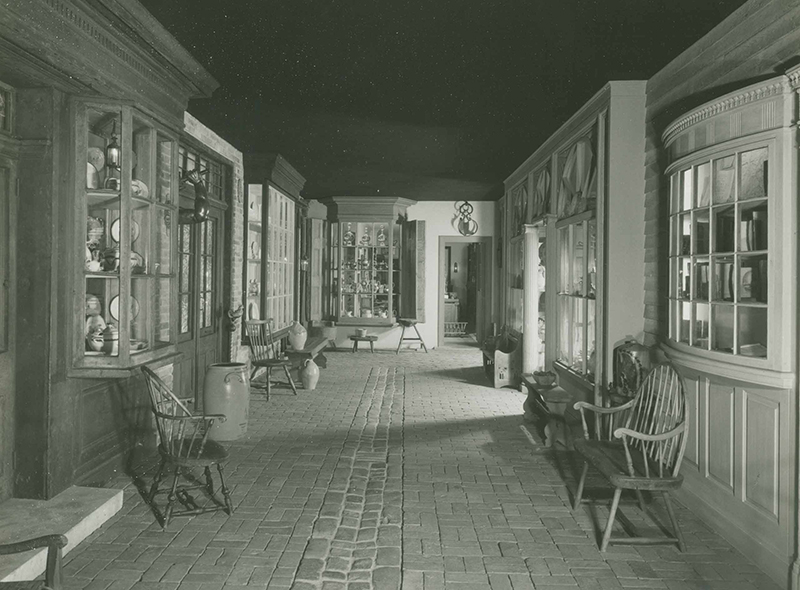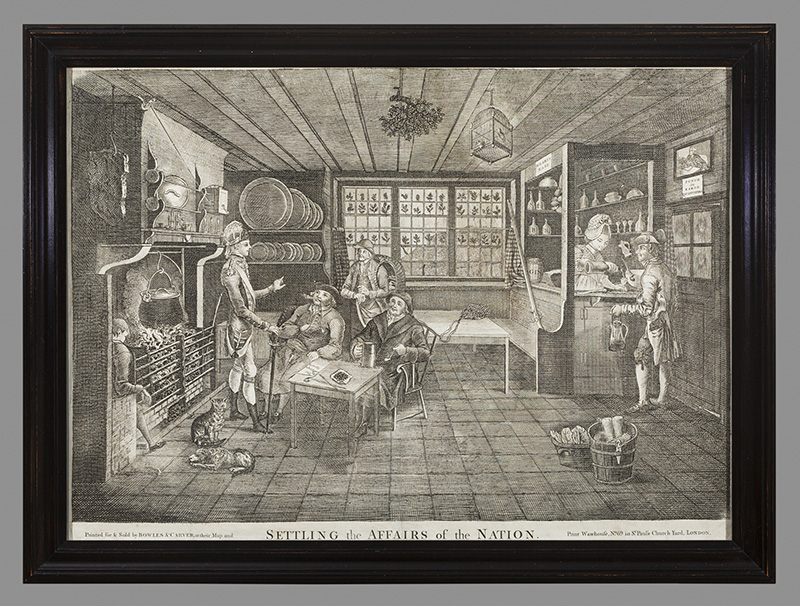Caputo and Malone Lecture at 2020 Delaware Antiques Show
The Annual Delaware Antiques Show looks a little different this year, but that is not stopping dealers from selling, collectors from browsing, and scholars from speaking.
Organized by Winterthur Museum, Garden & Library, the 2020 Show is being held virtually from November 7 to 14, using an online interface that allows participants to browse each dealer’s offerings, save favorite items to a virtual board, and make an inquiry or offer.
The Show also boasts a slate of impressive lecturers, who are presenting online. The Decorative Arts Trust is proud to once again sponsor two young lecturers at this event, as part of the Trust’s Emerging Scholars Program.

Cara Caputo
Cara Caputo presents “Esprit de Washington: The Story of a Patriotic French Flask.” Her lecture investigates a curious glass flask with patriotic imagery in the Winterthur collection, which looks like a book and can hold its liquor. Created by the Fremy Brothers Distillery in France, the flask—with its juxtaposition of George Washington’s image and French text on the “front cover”—prompts questions about international trade, politics, and advertising in the early 1800s. Cara is a Lois F. McNeil Fellow in the University of Delaware’s Winterthur Program in American Material Culture.
With its paper covers and imitation leather spine, this flask would have easily blended in with a shelf of books, but once removed, its true function would have been immediately evident. Displayed in Winterthur’s Albany Room, the object is not meant to deceive visitors but instead invites them to consider the purpose of creating a flask in the shape of a book and the use of Washington as the book’s subject. This lecture explores the various stories contained within the flask, including its connections to international trade and transatlantic relations. The creator of this object, the Fremy Brothers, were primarily distillers rather than glassmakers and produced several book flasks with different covers and titles, encouraging consumers to collect them all until they acquired a complete flask library. The creation of this “liquid library” would have ultimately served to increase the Fremy Brothers’ liquor sales as each flask is branded with the company name and encourages customers to fill their flasks. Further examining this flask not only reveals the essential titles needed in a 19th-century French library, but also connections between the French and American material worlds during this period.

Christopher Malone
Christopher Malone, also a Lois F. McNeil Fellow in the Winterthur Program, speaks about “Anonymous by Trade, Identified by Sight: Exploring a Shop Sign at Winterthur.” His presentation reveals the long life of an anonymous shoemaker shop sign acquired by Henry Francis du Pont before 1959. With the help of Winterthur conservators, the sign’s material clues revealed a colorful past hidden behind the surviving details. While not prized for its illustrious patterns of ownership or famous makers, this object is now regarded as a work of art, worthy of stewardship, conservation, and study.
“Some of the most interesting objects in any collection are those with no provenance or known history,” Malone explains. An object’s hidden history can be found in every scratch, repair, eroded surface, and paint layer. Meaning can be applied to objects in different ways based on the context in which they are staged. This lecture focuses on a trade sign within the Winterthur Museum collection. At almost 200 years old and featuring various paint campaigns on each surface, the trade sign experienced multiple surface treatments due to corrosion, changing tastes, or changing hands. Repainting the sign allowed it to remain fashionable to a discerning public while possibly changing its purpose over time. The trade sign now hangs above a doorway in the Winterthur Museum’s Shop Lane, adding a bit of realism to a curated space, where the objects are real, but their interplay is a choreographed dance bound to early-20th-century Colonial Revival ideals. We know little about the sign aside from what it looks like, but analysis of the object by Winterthur’s Conservation Department revealed its history through layers of paint and rust, unveiling the ways in which the sign was used over time. By piecing together material and symbolic clues, a new object narrative can be made that traces the trade sign’s origins from blacksmith to shoemaker to tavern keeper and finally into virtual obscurity where it was chosen by a collector for his museum.
The Decorative Arts Trust is dedicated to highlighting scholars and to sharing their research with all those interested in material culture. Watch recordings of past Trust lectures on our YouTube channel, and view the schedule of upcoming virtual programs on our calendar of events. The Trust thanks members as well as donors who support the Trust’s mission and the many grants and scholarship opportunities in the Emerging Scholars Program.
About The Decorative Arts Trust Bulletin
Formerly known as the "blog,” the Bulletin features new research and scholarship, travelogues, book reviews, and museum and gallery exhibitions. The Bulletin complements The Magazine of the Decorative Arts Trust, our biannual members publication.













